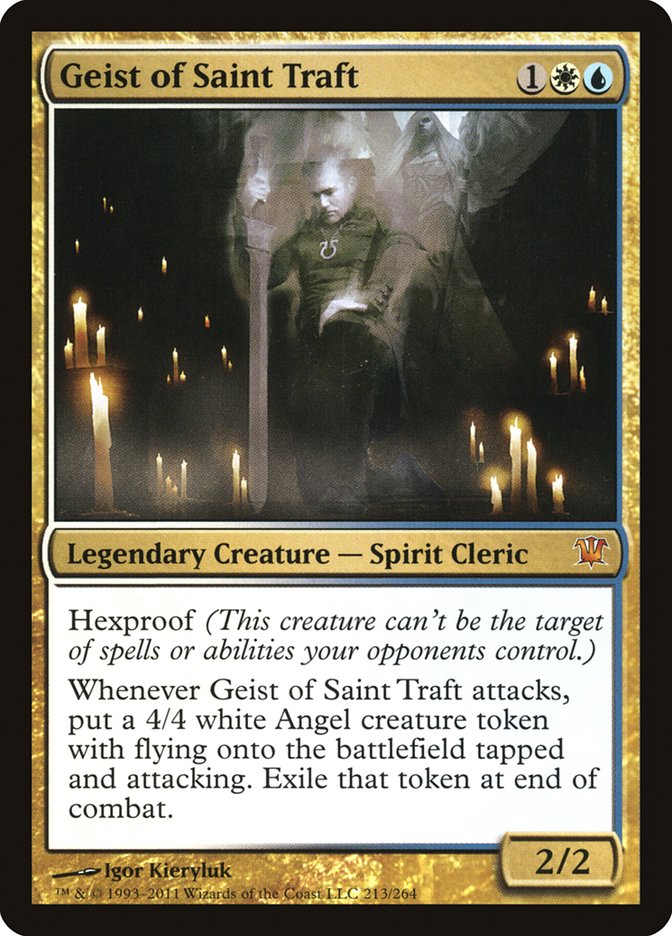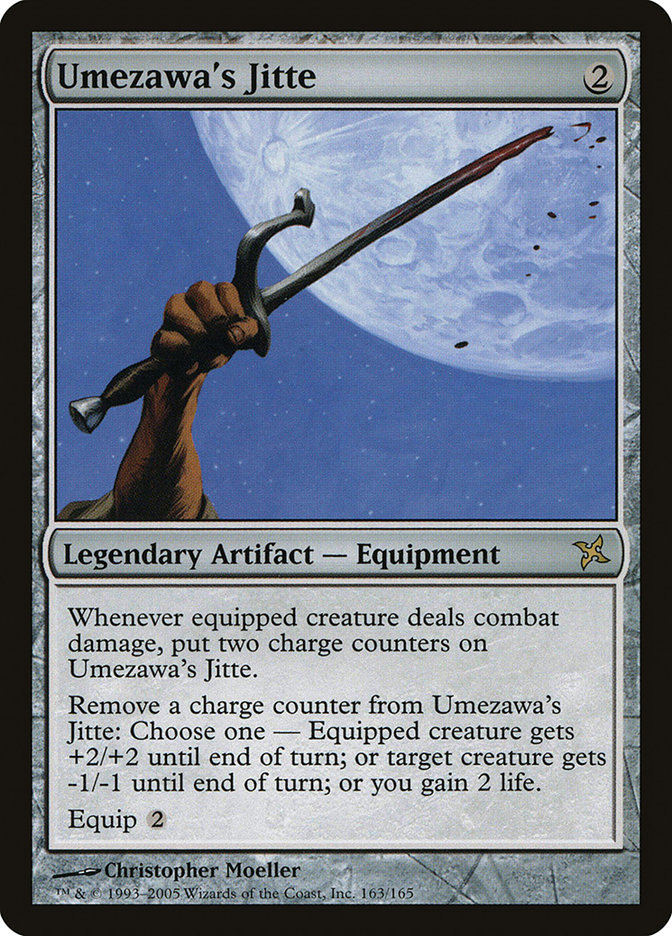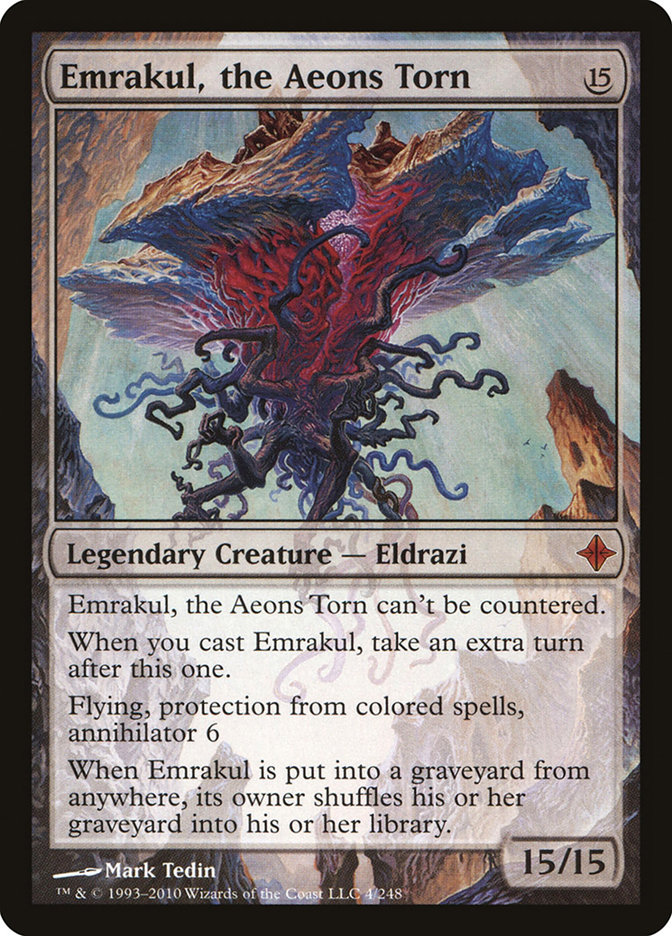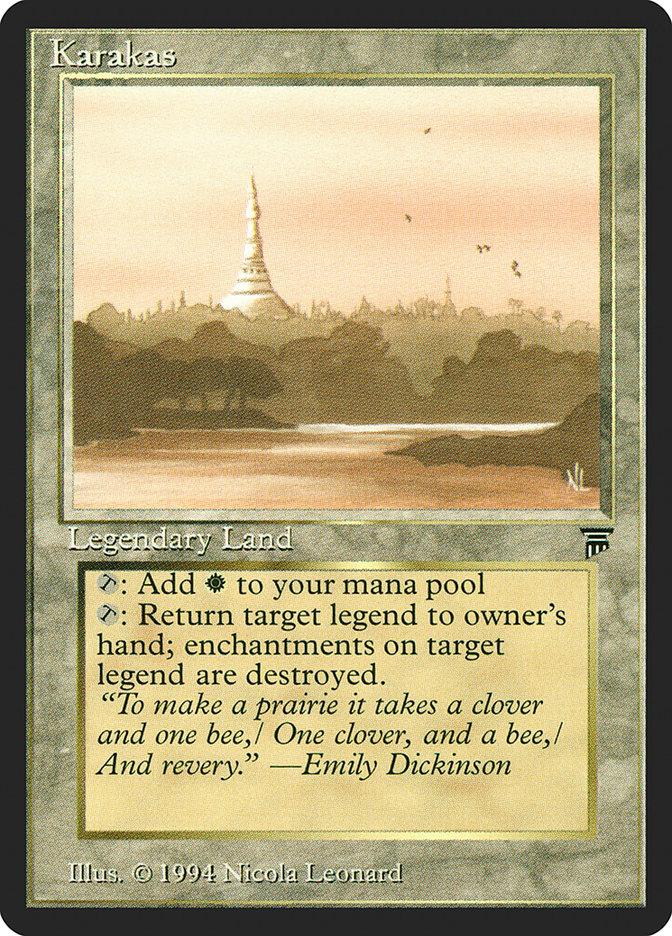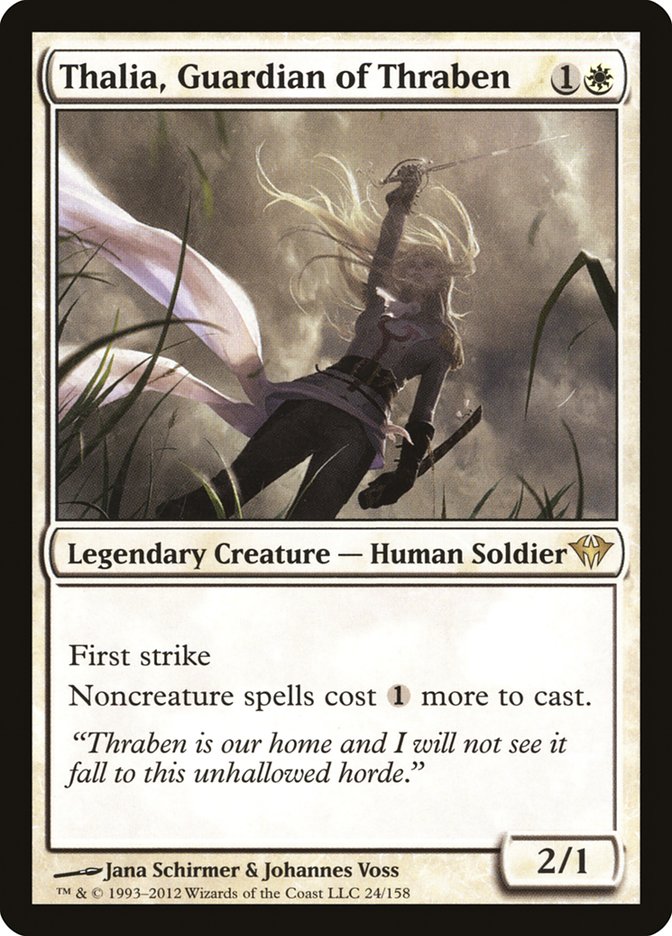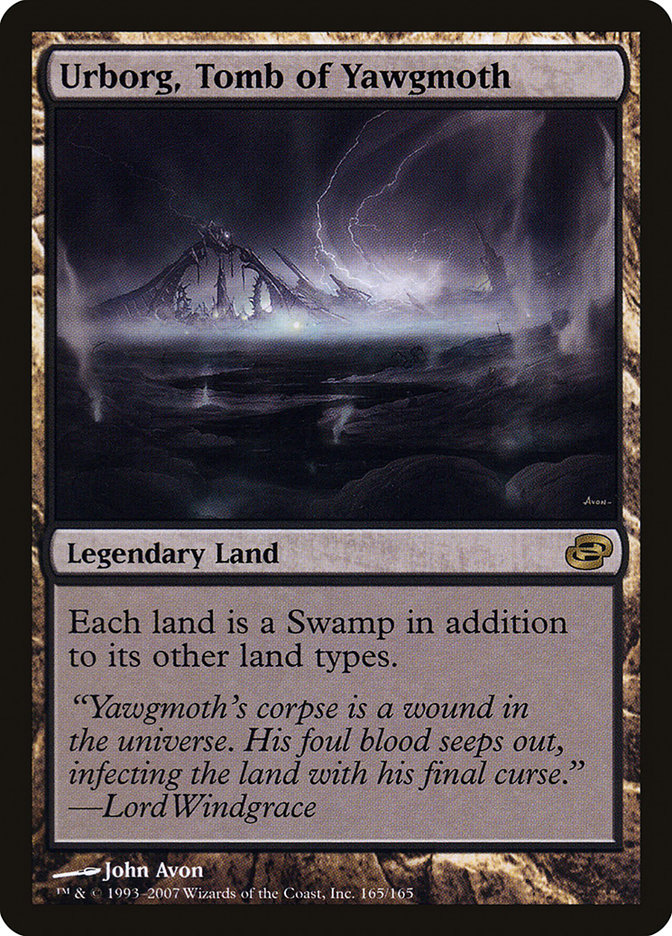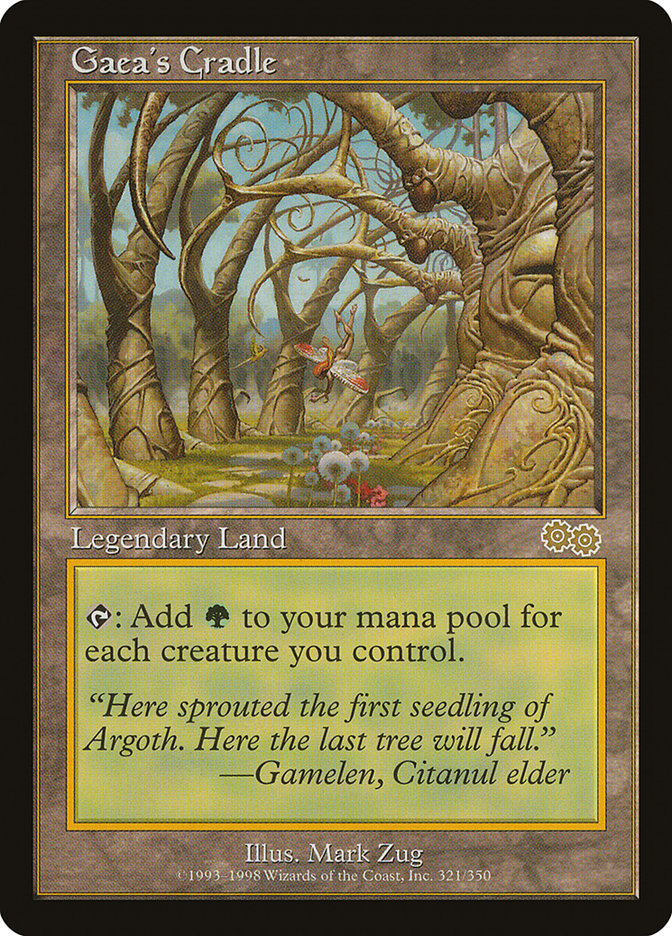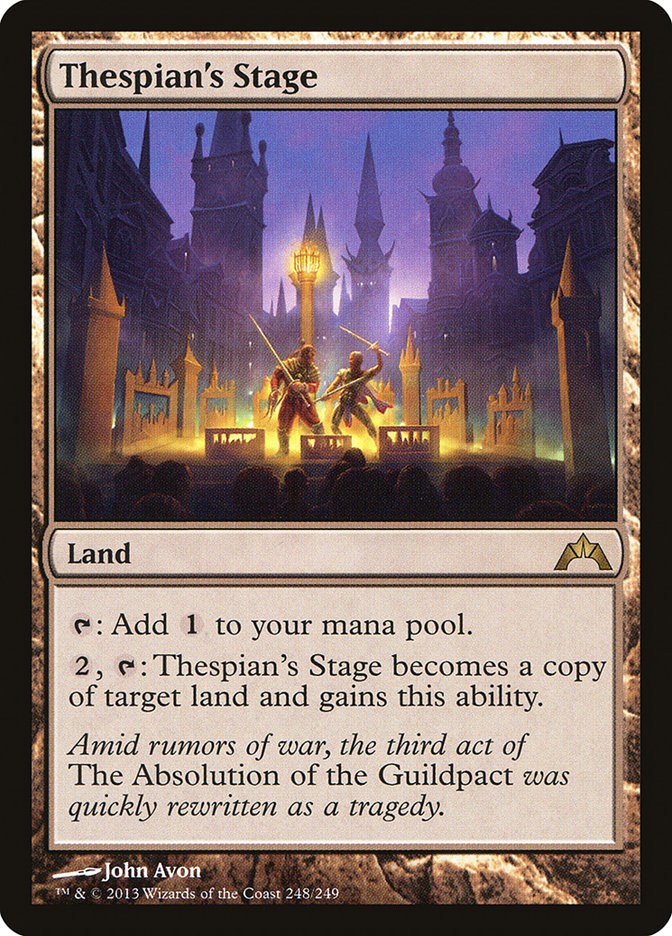The StarCityGames.com Invitational in Somerset, New Jersey is set to be played a mere two weeks from now. That’s rapidly approaching, and whilst many an article has discussed the kind of impact M14 is going to have in Standard, there hasn’t been much at all about Legacy.
In fact, Legacy seems to have mostly slipped by under the radar. You could say that Legacy discussion has been akin to a barren Wasteland. I think it’s time we buckled down and Pondered some of the changes that Legacy is going to have to deal with, lest our hopes and dreams be Stifled when we play the format next. Unrelated little known fact: my second-favorite long-running daytime soap opera was probably Daze of our Lives. Like sand through a Scourglass…
Considering a full 50% of the Invitational features the Legacy format, it’s probably worthwhile to take some time to consider how things might be different now than they once were.
And oh, how different they will be. In a format as ancient as Legacy, things tend to remain stagnant for long periods of time. New cards take longer to shake up the format, and things have a way of eventually achieving a level of stability, at least for a time.
That’s not going to be the case this time. It may be feasible to assume that Legacy is going to be relatively the same as it was the last time we saw it featured at the SCG Open Series in Worcester, Massachusetts. Normally, I think it would be, but something kind of cropped up a bit in the meantime that may throw a wrench into the mix. An entire new set was printed.
That set didn’t offer much for Legacy. With that being said, there is a little something else.
The rules have changed. That does offer a lot for Legacy.
M14 brings about a new change in how the rules work for legendary permanents as well as planeswalkers. While that will certainly have some implications in Standard, especially if Theros has a bunch of legends, it will most definitely have a lot of implications for Legacy, where a number of powerful legendary cards and planeswalkers already see a huge amount of play.
I’d like to cover some of the important cards that are going to behave differently in Legacy, as well as provide some suggestions and ideas for how to best utilize these changes alongside some ways to fight them now.
It would be wrong to start this list with anything other than the one they say is greater than all.
Jace, the Mind Sculptor
Jace, the freaking Mind Sculptor. You either love him or hate him. I suppose it’s theoretically possible that you could be indifferent toward him, but I reject that as a realistic option. [Editor’s Note: This is awkward…] Anyone who has played their fair share of fair decks in Legacy—or even Standard a few years ago—knows the feeling of dread you get when your opponent untaps with four mana. You start to chant to yourself, “Don’t play Jace. Don’t play Jace. Don’t play Jace,” over and over again. When they start tapping their mana for literally anything else, you breathe an audible sigh of relief. They could be casting Natural Order for a lethal Craterhoof Behemoth out of their Elves deck and all you can think is, “At least it wasn’t Jace.”
Unfortunately for the Jace haters out there, it probably will be Jace more often than not moving forward.
I feel like Jace stands to gain a lot from the new changes. For one, extra copies of Jace now actually count as real cards in your hand. Previously, you would just sit on an extra Jace so if your first Jace died you could follow it up with another. Now, extra Jaces give you even more options.
I can see a number of new lines of play that spring up from this.
- Use Jace to bounce a creature and then play a second Jace to bounce another creature and clear your opponent’s board.
- Use Jace to bounce a creature and then play a second Jace and fate seal to ensure his survival for the following turn and buy some time.
- Use Jace to brainstorm for answers and then play a second Jace to bounce a creature.
- Use Jace to brainstorm for answers, crack a fetchland to shuffle away the chaff, and play a second Jace to Brainstorm again.
- Use Jace to fate seal a lethal combo card to the bottom, play a second Jace, and fate seal again to ensure your opponent draws nothing.
In addition, your opponent’s Jaces will no longer destroy yours, so it will be interesting to see how games play out when both players have an active Jace. I can see this being both a benefit and a curse for the second player who plays a Jace depending on the scenario.
Rather than relying on their own copies of Jace or even cards like Jace Beleren to deal with opposing Jaces, it’s now important for Jace decks to come prepared to actually remove opposing Jaces from play.
The two easiest ways to accomplish this are to either destroy Jace or attack it to death with combat damage. As a result, there are a number of cards that improve in Legacy purely for this function. Since Jace’s -1 ability makes him resilient to normal creatures, it’s important to opt for threats that can safely ignore that ability from either hexproof, flash, or resiliency.
Maelstrom Pulse and Vindicate
These two cards fall completely into the “destroy” camp for dealing with Jace. Just kill him. One thing to be mindful of, however, is that Maelstrom Pulse can actually kill your own Jace as well if there are dueling Jaces in play. If you’re playing Maelstrom Pulse in a Jace deck, that’s definitely something to be cognizant of and play around. The same goes for Detention Sphere, another answer to Jace (albeit one I like less because of the vulnerability to Abrupt Decay).
Vendilion Clique
Vendilion Clique conveniently comes down the same turn as Jace when you’re on the draw and also conveniently is exactly the right size to kill a Jace that decides to use the Brainstorm ability. By virtue of having evasion, it’s unlikely your opponent will have a way to deal with it.
Vendilion Clique also stands to gain a lot from the new rule changes since extra copies are no longer dead in your hand. You can now play a second Vendilion Clique and let the first one die, which can strip yet another card from your opponent’s hand or upgrade one of your own if desired.
Snapcaster Mage
While Snapcaster Mage can’t quite kill Jace on his own, he can team up with anything you have in play, such as a Stoneforge Mystic or Deathrite Shaman, to finish the job. Even just putting Jace at one loyalty can sometimes present enough pressure to finish it off the following turn since the -1 ability is no longer active if they want to try to keep their Jace around.
Snapcaster Mage might also see his stock rise if cards like Vindicate and Maelstrom Pulse become more universally adopted to win the Jace wars since being able to flashback one of those two bad boys gives Severus Snap a little extra bang for his buck.
Lingering Souls
Lingering Souls cast the first time doesn’t present enough pressure to kill Jace by itself, nor does it prevent his -1 ability from being profitably used. However, what Lingering Souls can do is present a constant stream of pressure that eventually has to be answered. If not, over time it will whittle down and kill Jaces and finally the opposing player. Typically, Jace decks struggle to deal profitably with Lingering Souls since they are based on spot removal like Abrupt Decay and Swords to Plowshares and having to get four-for-oned to kill off all the tokens is actually a huge strain on their resources.
I vividly remember getting paired against Tom Martell in a Legacy Grand Prix and knowing I was screwed before the round even began. I didn’t have Lingering Souls in my build, and I’m pretty sure you can figure out whether or not he did. The man has a freaking 1/1 flying Spirit token made after his own image. Clearly, I was going to be the soul loser of that match.
Geist of Saint Traft
William H. Traft is another card on the list that stands to gain from the new legendary rules. Not only can your opponent no longer kill your Geist with their own copy, but it also happens to come down the turn before Jace and threatens to kill him even through a blocker for the Geist. Geist can put an extreme amount of pressure on a Jace deck by threatening their planeswalkers, avoiding common spot removal spells, and ending the game very quickly.
Another strategy is to just play a deck that doesn’t care about Jace and continue to ignore him as you have in the past. That always works too. If you do happen to play a fair deck, though, be sure to have a way to beat the card, as it will likely become even more popular than it already is with the rule changes.
Liliana of the Veil
Liliana is another big gainer from the rule changes. In fact, I think Liliana has more to gain than Jace does. For one, Liliana is a planeswalker you often wish you didn’t have in play so you could play a second copy with a fresh three loyalty. Now, you don’t have to worry about that. Secondly, Liliana has a series of abilities that leads to her needing to be replaced a lot. Jace is capable of activating any of his non-ultimate abilities regardless of what his loyalty is, but a Liliana on one loyalty has only two options: don’t use any ability or make each player discard a card.
Now, there is another option. Play a second Liliana from your hand and make your opponent sacrifice yet another Geist of Saint Traft. Edict move, bro. That second Geist was played to no…avail.
One interesting decision that can be made moving forward is what to do when untapping with a Liliana on one counter. Even if you want to play a second Liliana from hand to use the -2 ability again, do you +1 the original Liliana first, or is both players discarding a card a net negative there? I think there will be a lot of play to navigating the previously uncharted waters of how to handle multiple Lilianas and I’m excited to see how it all shakes down in practice.
Another thing I like is that Liliana gets a lot better against combo decks. Instead of playing a Liliana and just automatically discarding a second copy since the first one will never die, it’s now feasible to keep the second copy around. On the following turn, you can tick up Liliana, forcing both players to discard, and then play the second Liliana and tick it up again, forcing both players to again discard. Against decks like Storm that often require a critical mass of cards to go off, this could be enough to keep them from killing you long enough to win in the meantime. Discarding multiple cards to Mind Rot your opponent never felt quite so good.
Liliana also should rise in stock because she is one of the few cards that is both an overall good card and also happens to be a good answer for the very next card on the list.
Geist of Saint Traft
I hit on this in Jace section, but Geist stands to gain a lot from the rule changes. For one, he’s almost impossible to remove from play now. Your opponent’s Geist won’t kill him anymore, nor will Phantasmal Image.
As a result, it may be worth playing more equipment or enhancements to go with Geist now that he will certainly be in play a lot more.
Additionally, it’s definitely worth looking into other ways to attack your opponent’s copies. One easy way is with edict effects. Liliana is the poster girl for this kind of effect, but perhaps it’s time to bring back cards like Diabolic Edict or even Innocent Blood to handle Geist.
Another option is to simply create enough of a dominant board presence to the point where you don’t care about Geist anymore. Creatures like Tarmogoyf are cheaper that Geist and also outclass him, but at the same time they are vulnerable to cards like Swords to Plowshares.
The best way to beat the combination of both Geist of Saint Traft and Swords to Plowshares is to either play too many creatures for those cards to matter or to play threats that can fight through both. The number of those creatures is pretty low, but perhaps it’s time for a resurgence in cards like Thrun, the Last Troll in Legacy.
The final option is sweeper effects. Cards like Pyroclasm and Rough // Tumble can efficiently kill both Geist of Saint Traft and his supporting cast of Deathrite Shaman, Stoneforge Mystic, Snapcaster Mage, and Dark Confidant. Supreme Verdict is slow but guaranteed to be effective. Even something like Pernicious Deed will do the trick and can also clear out cards like Umezawa’s Jitte that could be problematic moving forward as well.
And on that note…
Umezawa’s Jitte
This card has always been kind of an afterthought in Stoneforge mirror matches. There are times when it runs away with a game, but more often it just trades with your opponent’s copy at some point and then is never a thing again. That’s not the case anymore.
I feel that Jitte could very well become a powerhouse in Stoneforge Mystic matches moving forward. As a result, it may even be right to alter your deck to take greater advantage of this card.
For one, Jitte has natural synergy with Lingering Souls. Oftentimes, you will equip Jitte to a creature, that creature will get Plowed, and then you won’t have anything else in play to suit up. The Jitte just sits there lonely for a while until your opponent finally decides it’s time to play their copy and you move on with your lives.
Lingering Souls changes that dynamic. Jitte isn’t going to leave play that easily, and Souls provides a long stream of creatures to equip it to. The creatures also have evasion, which gives them a good chance to avoid dying in combat or allows you to still pump up your Jitte even through a lot of annoying creatures like Mother of Runes and Wirewood Symbiote that can otherwise stifle your ability to deal combat damage with ground dudes.
Another creature that pairs well with Jitte is Baleful Strix. Much like with Lingering Souls, Baleful Strix having flying means that it will connect a lot more frequently with Jitte in the matchups it matters most. Baleful Strix is also just a very good creature right now, as it always replaces itself and threatens to trade with some of the scarier creatures like Tarmogoyf and Geist of Saint Traft. Even if they kill your Baleful Strix, you come out on the exchange up a card.
Abrupt Decay is the easiest answer to the card in the format. It’s powerful, and it’s good enough to run maindeck in nearly everything. Decks that struggle to beat Umezawa’s Jitte, like Elves and Maverick, will definitely have to keep the prevalence of Jitte in mind when deciding whether cards like Decay are good enough to run in the maindeck or not. Maverick will likely need to run something like Qasali Pridemage as a Green Sun’s Zenith target at the very least in order to be able to compete.
Emrakul, the Aeons Torn and Griselbrand
We finally get to some of the more unfair cards. These two Sultans of Sneak have reared their ugly heads time and time again to kill unprepared foes on turn 2, and they are unapologetic about it.
For the most part, the new legendary rule isn’t going to apply to these two very often, but there are a few scenarios where I can see it coming up. They mostly involve matches against other Show and Tell decks, but there are some exceptions.
First of all, Show and Tell is now a much riskier proposition to cast in the mirror match than it ever was before. If you and your opponent both put in Emrakul, then you’re pretty much drawing dead because they will be able to attack you with theirs on the following turn, likely making you have to sacrifice yours.
With that being said, it seems as though Sneak Attack is now a much more powerful card. If you cast Show and Tell and put in Sneak Attack, even if your opponent puts in Emrakul you can still Sneak in your own copy and ravage their board.
Finally, there are a few other fringe scenarios where I can see the new legendary rule being relevant. Against decks that can actively pressure your life total, such as Merfolk, Goblins, and Maverick, a few hits with Griselbrand isn’t always enough to win the game. Now, you can do something like attack with Griselbrand to gain some life and then post-combat play another Show and Tell to put in a second copy of Griselbrand in order to be able to block.
The same thing works for Emrakul. Sometimes, annihilating their board isn’t enough, and you need another Emrakul out there to block that Angel when they attack with a Geist of Saint Traft and you’re at three life.
Karakas
This card is now a much safer card to play in white decks since you don’t have to worry about your opponent’s copy serving as a Wasteland that you can’t respond to. It’s also no longer something that a deck like Reanimator can sideboard in order to answer opposing copies of the card.
However, it becomes a much more viable option in decks like Storm now that you don’t have to worry about opposing copies hitting yours. The new rule also lets you do things like float mana from a first copy and then play a second to bounce their Thalia, Guardian of Thraben or even just use both copies to bounce something like a Thalia and a Gaddock Teeg back to hand. I wouldn’t be surprised to see this card pop up in a lot more in sideboards of decks that lose to cards like Thalia or Teeg as a free answer to those cards.
Death and Taxes also gets a major benefit from this change, as it is one of the few decks that are willing to play multiple copies of Karakas and now additional copies can actually produce mana for a turn or even allow you to get multiple uses of the ability. While probably not relevant that often, it’s certainly something to keep in mind.
Thalia, Guardian of Thraben
Most of the time, the new rules aren’t going to be terribly relevant for Thalia, but I can think of a few scenarios where they are. For one, it’s now possible to attack with a Thalia and then play a second copy in order to block. Secondly, in an Aether Vial deck like Death and Taxes, you can Vial in a second copy of Thalia in response to a removal spell aimed at the first copy. This ensures that your opponent is still locked out from casting cheaper spells and that they won’t get a chance to cheat out a cheap Brainstorm in response to your Vial activation.
Urborg, Tomb of Yawgmoth; Gaea’s Cradle; Serra’s Sanctum
These legendary lands all stand to gain from the new rules, but I honestly don’t know if it will really make a difference or not. I’ve always felt that one Gaea’s Cradle is enough for Elves to go off, and I’m not sure it’s really needed for them to be able to play a second copy. Similarly, by the time Serra’s Sanctum is doing crazy things from the Enchantress deck, the opponent is already usually pretty dead.
There is one legendary land that may get a bit more play now, though, and that is…
Dark Depths and Thespian’s Stage
The new rule changes mean that a Thespian Stage that copies a Dark Depths will result in a 20/20 Gerry Thompson token entering the battlefield. I have no clue if this combo will actually be good or not, but it’s a combo that can be searched up by both Knight of the Reliquary and Crop Rotation and can be done at the end of turn. I definitely think that it’s worth experimenting with this combo at the very least. Perhaps a deck like Lands will want to incorporate this in order to set up a quicker win.
Overall, I expect that Legacy will be sufficiently “shaken up” by the new rule changes. There really is a ton of cards that see a large amount of play that are all affected by the new rules, and there is also a number of cards that aren’t legendary that will still see their stock rise and fall simply by virtue of how they interact.
I spent the entire article talking about how the legendary cards will be affected in Legacy. I’d like to close by listing my top three non-legendary cards that I think will spike in power as a result of the new rules.
Stoneforge Mystic: Searches up the now-harder-to-kill Umezawa’s Jitte, which also happens to now be a powerhouse on the harder-to-kill Geist of Saint Traft.
Lingering Souls: Souls tokens wield a Jitte very well and also are adept at taking down Jace and Liliana, two cards that both gain a lot from the new rules.
Vindicate: Vindicate takes care of Jace, Jitte, Liliana, and can even break up the Dark Depths / Thespian’s Stage combo. Much like Lingering Souls, Vindicate is weak against combo decks, but it should be a very powerful card in fair mirrors moving forward.
There will be a lot of changes in Legacy even though the card pool will remain largely the same. How will the format adapt? I’m excited to see it all shake down in New Jersey. I can only hope I’m on the cutting edge of the new changes and not the one lagging behind.
Thanks for reading,
Brian Braun-Duin
@BraunDuinIt on Twitter
BBD on Magic Online



